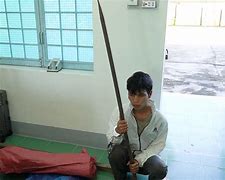Tiếng Anh 3 Unit 2 Lesson 2 Global Success
Với giải bài tập Tiếng Anh lớp 2 Unit 3 Lesson 2 trang 15 sách Global Success hay nhất, chi tiết sẽ giúp học sinh dễ dàng làm bài tập về nhà môn Tiếng Anh lớp 2 Unit 3 Lesson 2 trang 15 Tiếng Anh 2.
Với giải bài tập Tiếng Anh lớp 2 Unit 3 Lesson 2 trang 15 sách Global Success hay nhất, chi tiết sẽ giúp học sinh dễ dàng làm bài tập về nhà môn Tiếng Anh lớp 2 Unit 3 Lesson 2 trang 15 Tiếng Anh 2.
Tiếng Anh lớp 2 Unit 3 Lesson 2 trang 15 - Global Success
3 (trang 15 sgk Tiếng Anh lớp 2 Global Success): Listen and chant (Hãy nghe và hát)
Video giải Tiếng Anh lớp 2 Unit 3 Lesson 2 Bài 3 - Global Success
4 (trang 15 sgk Tiếng Anh lớp 2 Global Success): Listen and tick (Hãy nghe và tích)
Video giải Tiếng Anh lớp 2 Unit 3 Lesson 2 Bài 4 - Global Success
1. I can see the sail. (Tôi có thể thấy cánh buồm.)
2. I can see the sand. (Tôi có thể thấy cát.)
5 (trang 15 sgk Tiếng Anh lớp 2 Global Success): Look and write (Hãy quan sát và viết)
Video giải Tiếng Anh lớp 2 Unit 3 Lesson 2 Bài 5 - Global Success
Lời giải bài tập Tiếng Anh lớp 2 Unit 3: At the seaside hay khác:
Các bài học để học tốt Tiếng Anh lớp 2 Unit 3: At the seaside:
Xem thêm lời giải bài tập Tiếng Anh lớp 2 Global Success (bộ sách Kết nối tri thức) hay khác:
Xem thêm các tài liệu học tốt lớp 2 hay khác:
Đã có app VietJack trên điện thoại, giải bài tập SGK, SBT Soạn văn, Văn mẫu, Thi online, Bài giảng....miễn phí. Tải ngay ứng dụng trên Android và iOS.
Theo dõi chúng tôi miễn phí trên mạng xã hội facebook và youtube:
Loạt bài Giải bài tập Tiếng Anh lớp 2 hay và chi tiết của chúng tôi được biên soạn bám sát nội dung sách Tiếng Anh lớp 2 Global Success (NXB Giáo dục).
Nếu thấy hay, hãy động viên và chia sẻ nhé! Các bình luận không phù hợp với nội quy bình luận trang web sẽ bị cấm bình luận vĩnh viễn.
Các loạt bài lớp 2 Kết nối tri thức khác
Goal: Pupils will be able to say the sound of the letter S/s, the words sea, sail, sand and the structure “I can see the _ .” in a chant.
Input: There are two verses in the chant. The letter S/s, the words sea, sail and sand are introduced in the first verse. The sentences “I can see the sea.”, “I can see the sail.” and “I can see the sand.”are in the second one. The letter S/s is in red.
Procedure: Step 1: Have pupils look at the picture and answer some questions such as What can you see?, Can you see the sail?, Can you see the sand?, Can you see the sea? Ask pupils to point at the sail, the sand and the sea and say the words sail, sand, sea aloud. Check their comprehension.
Step 2: Have pupils look at the chant. Ask them to pay attention to the letter S/s, the words sea, sail, sand and the sentences “I can see the sea.”,“I can see the sail.” and “I can see the sand.” Explain the meanings of the sentences, if necessary.
Step 3: Let them look at the chant. Play the recording of the chant for pupils to listen and to get familiarized with the tune.
Step 4:Get pupils to point to the letter S/s and the words sea on the first line. Play the recording and ask them to listen and repeat. Show them how to chant and clap their hands.
Step 5: Follow the same procedure with other lines of the first verse.
Step 6: Let pupils point to the sentence I can see the sea, play the recording and ask them to listen and repeat individually and in chorus. Ask a few pupils to listen and repeat the sentence in front of the class. Correct pronunciation, if necessary. Follow the same procedure with the other lines.
Step7:Playthe recordingagain (more thanonce, if necessary) forpupils to listen and repeat the chant individually and in chorus. Give further support to those pupils who find it difficult to do the task.
Step 8: Select some groups to come to the front of the class to chant and clap their hands. The rest of the class may give comments.
Outcome: Pupils can listen and sing the chant with correct pronunciation, natural stress and rhythm.
a. This is the living room. (Đây là phòng khách.)
b. Where are the chairs? (Mấy cái ghế đâu rồi?)
They’re in the kitchen. (Chúng ở trong bếp.)
- Where are the + (danh từ số nhiều) ? (___ ở đâu?)
a. Where are the tables? (Mấy cái bàn ở đâu?)
They’re in the living room. (Chúng ở trong phòng khách.)
b. Where are the chairs? (Mấy cái ghế ở đâu?)
They’re in the living room. (Chúng ở trong phòng khách.)
They’re on the table. (Chúng ở trên bàn.)
d. Where are the lamps? (Mấy cái đèn ở đâu?)
They’re on the table. (Chúng ở trên bàn.)
- Where are ___ ? (___ ở đâu?)
- Where are the books? (Mấy quyển sách ở đâu?)
They’re on the table. (Chúng ở trên bàn.)
- Where are the lamps? (Mấy cây đèn ở đâu?)
They’re on the table. (Chúng ở trên bàn.)
1. Where are the lamps? (Mấy cái đèn ở đâu?)
They're in the living room. (Chúng ở phòng khách.)
2. Where are the lamps? (Mấy cái đèn ở đâu?)
They're in the kitchen. (Chúng ở phòng bếp.)
3. Where are the lamps? (Mấy cái đèn ở đâu?)
They're in the bathroom. (Chúng ở phòng tắm.)
4. Where are the lamps? (Mấy cái đèn ở đâu?)
They're in the bedroom. (Chúng ở phòng ngủ.)
(Nhìn, khoanh tròn và đọc.)
A: Where are the tables? (Mấy cái bàn ở đâu?)
B: They’re in the kitchen. (Chúng ở trong bếp.)
A: Where are the books? (Mấy quyển sách ở đâu?)
B: They’re on the table. (Chúng ở trên bàn.)
A: Where are the tables? (Mấy cái bàn ở đâu?)
B: They’re in the kitchen. (Chúng ở trong bếp.)
A: Where are the chairs? (Mấy cái ghế ở đâu?)
B: They’re in the bedroom. (Chúng ở trong bếp.)
Cách chơi: Giáo viên sẽ cho các từ như: there, in, on, tables, chairs, lamps, living room, bedroom, kitchen. Học sinh sẽ kẻ môt cái bảng với 9 ô nhỏ và ghi một từ đã cho vào bất kì mỗi ô tương ứng. (bảng trên đề bài là 1 ví dụ). Khi giáo viên đọc bất kì từ nào, nếu các bạn có từ được đọc thì đánh dấu X hay √. Bạn nào tạo được hàng ngang, hàng dọc hay hàng chéo với đầy đủ các từ đã được đọc thì hô to “Bingo” và chiến thắng.



















